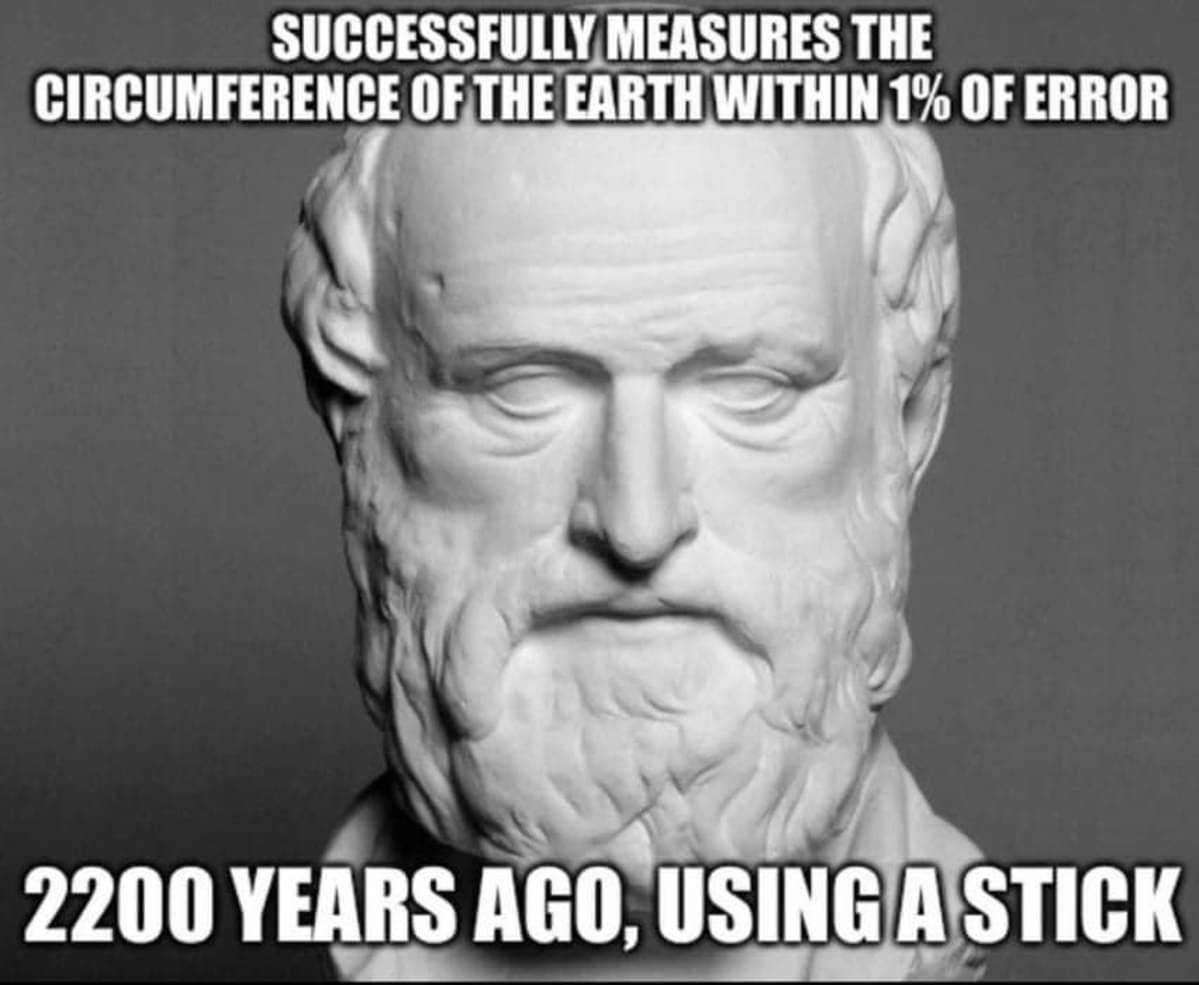this post was submitted on 06 May 2024
1023 points (99.3% liked)
Science Memes
11278 readers
2771 users here now
Welcome to c/science_memes @ Mander.xyz!
A place for majestic STEMLORD peacocking, as well as memes about the realities of working in a lab.

Rules
- Don't throw mud. Behave like an intellectual and remember the human.
- Keep it rooted (on topic).
- No spam.
- Infographics welcome, get schooled.
This is a science community. We use the Dawkins definition of meme.
Research Committee
Other Mander Communities
Science and Research
Biology and Life Sciences
- [email protected]
- [email protected]
- [email protected]
- [email protected]
- [email protected]
- [email protected]
- [email protected]
- [email protected]
- [email protected]
- [email protected]
- [email protected]
- [email protected]
- [email protected]
- [email protected]
- [email protected]
- [email protected]
- [email protected]
- [email protected]
- [email protected]
- [email protected]
- [email protected]
- [email protected]
- [email protected]
- [email protected]
- !reptiles and [email protected]
Physical Sciences
- [email protected]
- [email protected]
- [email protected]
- [email protected]
- [email protected]
- [email protected]
- [email protected]
- [email protected]
- [email protected]
Humanities and Social Sciences
Practical and Applied Sciences
- !exercise-and [email protected]
- [email protected]
- !self [email protected]
- [email protected]
- [email protected]
- [email protected]
Memes
Miscellaneous
founded 2 years ago
MODERATORS
you are viewing a single comment's thread
view the rest of the comments
view the rest of the comments

isnt this the fucker who used units of stadia? The unit that we have no historical reference to? (at least one significant enough to be certain about it's actual referenced distance) Which means that we don't actually know how accurate it was?
I mean we do know the formula, se we know pretty well how accurate it was, since we can just use the same formula with meters and calculate it ourselves
"The simplified method works by considering two cities along the same meridian and measuring both the distance between them and the difference in angles of the shadows cast by the sun on a vertical rod (a gnomon) in each city at noon on the summer solstice. The two cities used were Alexandria and Syene (modern Aswan), and the distance between the cities was measured by professional bematists.[16] A geometric calculation reveals that the circumference of the Earth is the distance between the two cities divided by the difference in shadow angles expressed as a fraction of one turn. "
Sorta. The stade was based on the pous which varied. But not that much, and in ways that are often consistently documented. Around the time Eratosthenes was alive, give or take a couple hundred years, it was documented that 1 Roman mile = 8 stades, which gives us something to go of off. While there are other possible definitions, we do have one that we know is probably closest to whatever Eratosthenes used.
EDIT - the numbers regarding the error range in this source is likely inaccurate, but goes into the units issue
https://maa.org/press/periodicals/convergence/eratosthenes-and-the-mystery-of-the-stades-how-long-is-a-stade
+/-20% error isn't terrible on a conversion. The fact that it's only 10% offset is crazy though.